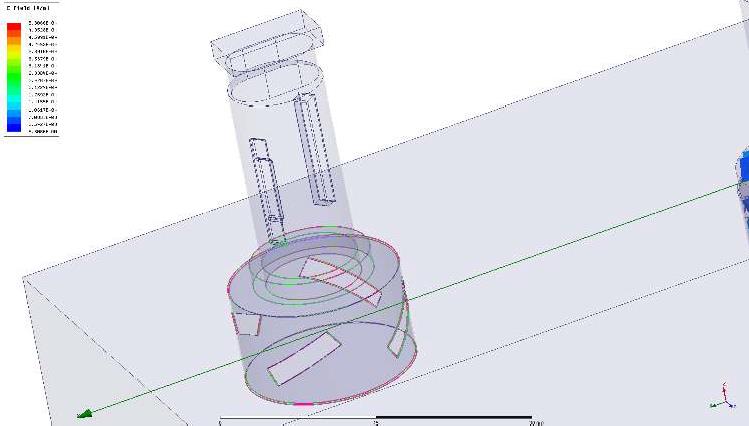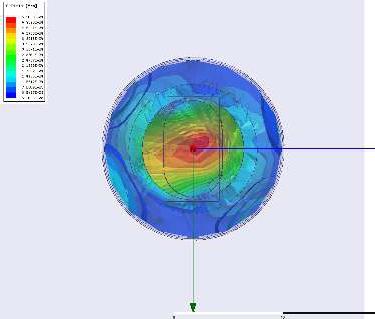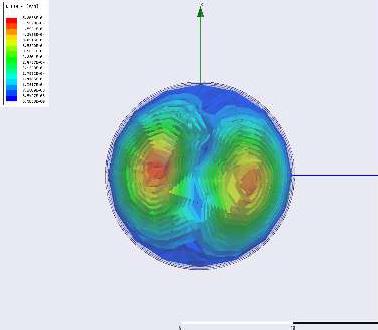Ferrite Microwave Technologies receives final phase patent approval for the new slotted polar cap (SPC) antenna for microwave processing.
The purpose of the antenna design is to give improved field distribution and enhanced coupling to a lightly loaded cavity. As a result, users will experience superior product heating and increased efficiency in the system.
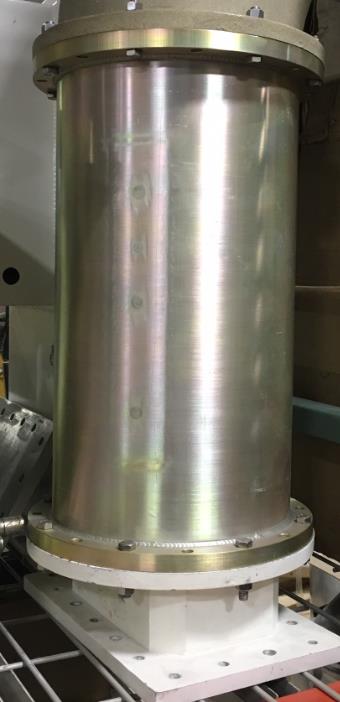
Traditional vs. New Slotted Polar Cap
Raytheon / Amana first introduced the rotary antenna to the industrial microwave world when they first started selling industrial microwave systems in the 1980s. Ferrite Microwave Technologies (FMT) acquired the Amana Industrial Microwave Division in 1993. In 1999, FMT developed the first static microwave antenna with comparable mode mixing to the rotary; the SpinWave™ Polarized Microwave Feed (aka “The Polarizer” at right). This feed converted the standing 915 MHz wave into a rotating wave pattern before launching the microwave energy into the processing cavity.
These new feeds had to be staggered across the width of the microwave belt, as they produced isolated direct illumination underneath each feed location. For this reason, they were not ideal for use in smaller processing cavities with only a few feed locations. In the late 2000s, FMT started working on the next step forward in the technology.
A slotted feed was paired with the polarizer to create a homogeneously diffused field, but without the direct illumination effect (see prototype below). A smaller, more refined version was developed to allow for retrofits to existing installations and to keep footprint to a minimum and minimize upgrade costs. This final design is the Slotted Polar Cap, or SPC.

SPC Antenna Design Features
The antenna is designed to be used with the FMT patented septum polarizer assembly, this assembly creates a single mode polarized signal in circular waveguide which when coupled to a microwave cavity creates multiple modes within the cavity due to the rotating nature of the polarized signal generated. The new antenna is sized to support a TE21 mode when excited with the TE11 mode created by the polarizer assembly.
As with the polarizer output the signal rotates with phase, slots are cut in the outer wall of the antennae to allow coupling to the cavity, In affect we have created two rotating signals from the single polarizer output. The position and orientation of the slots are optimized for maximum coupling to the cavity and minimum reflection back towards the microwave generator especially in a lightly loaded case.
The configuration is not only useful for lightly loaded use cases, but also enables superior field distribution and very low reflected power levels within heavily loaded cavities. This versatility represents a marked improvement in efficiency compared to other feed structures. Another major benefit of this antenna is that the slots are placed on the outside of the antennae there is no direct illumination of the process material with this feed and hence the occurrence of hotspots below the feed is eliminated, this being a phenomenon exhibited with all other feed systems currently in use.
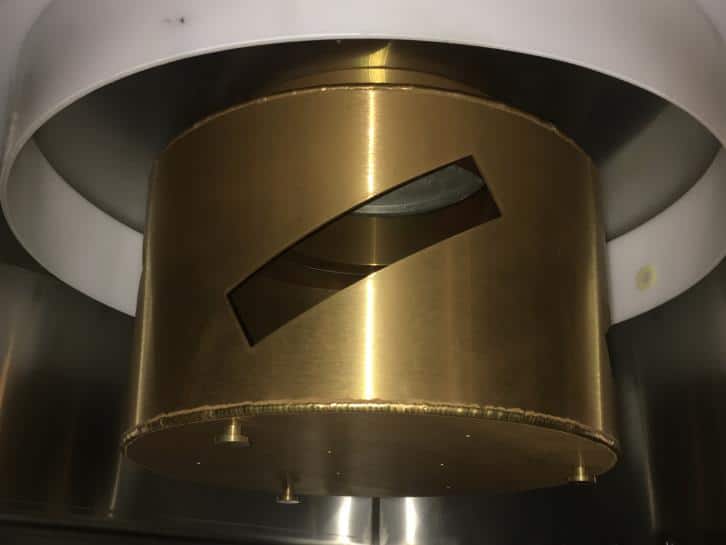
In the following figures, all of which use the same power level and scale, it’s clearly demonstrated that the SPCs results in better power absorption and uniformity than traditional rotary antenna. An eight foot cavity with two SPCs is shown, which is the configuration FMT most often utilizes for 75 kW and 150 kW tempering tunnels. A twelve foot tunnel with three SPCs is also shown. SPCs, in addition to being easier to maintain than rotary antenna, are more energy efficient in microwave application and power reflection mitigation.
Note: Rotary antenna simulations show only one snapshot in time, those fields change as the anteanna spins. However, basic field uniformity and absorption trends remain constant.
8 Foot Cavity, No Product
Figure 1: Rotary Antenna, 100 kW
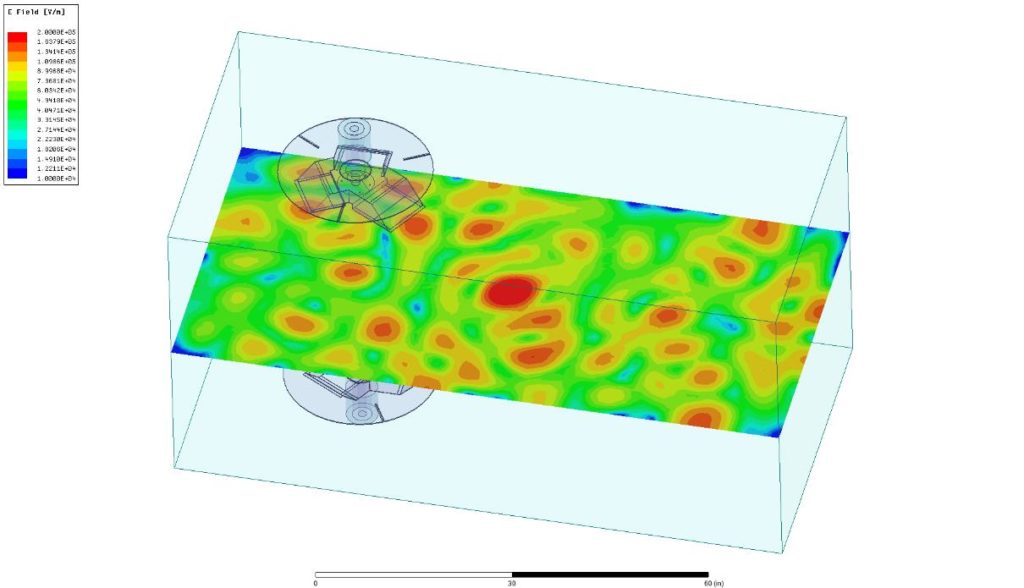
Figure 2: Slotted Polar Caps, 100 kW
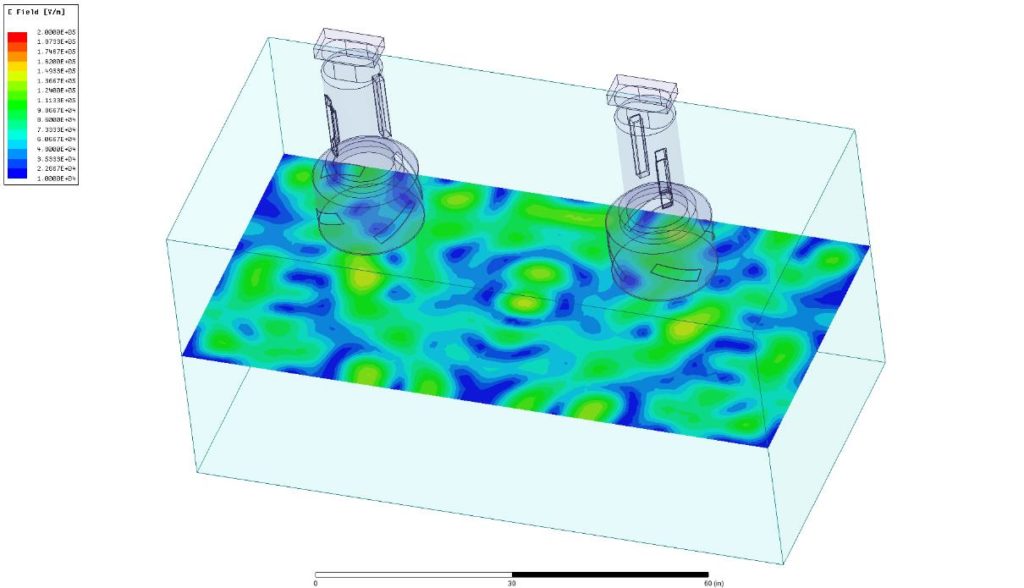
12 Foot Cavity, No Product
Figure 3: Rotary Antenna, 100 kW
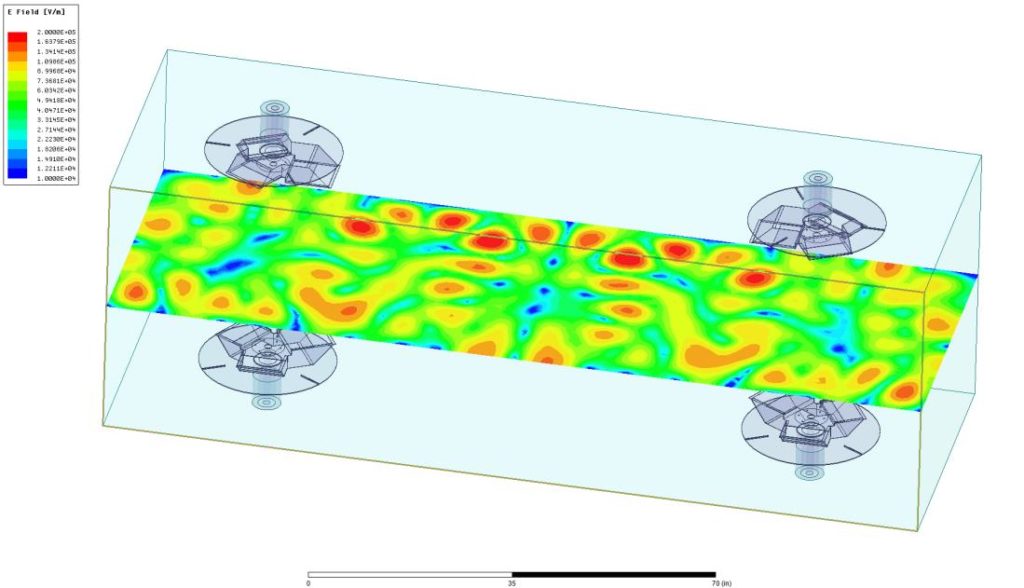
Figure 4: Slotted Polar Caps, 100 kW
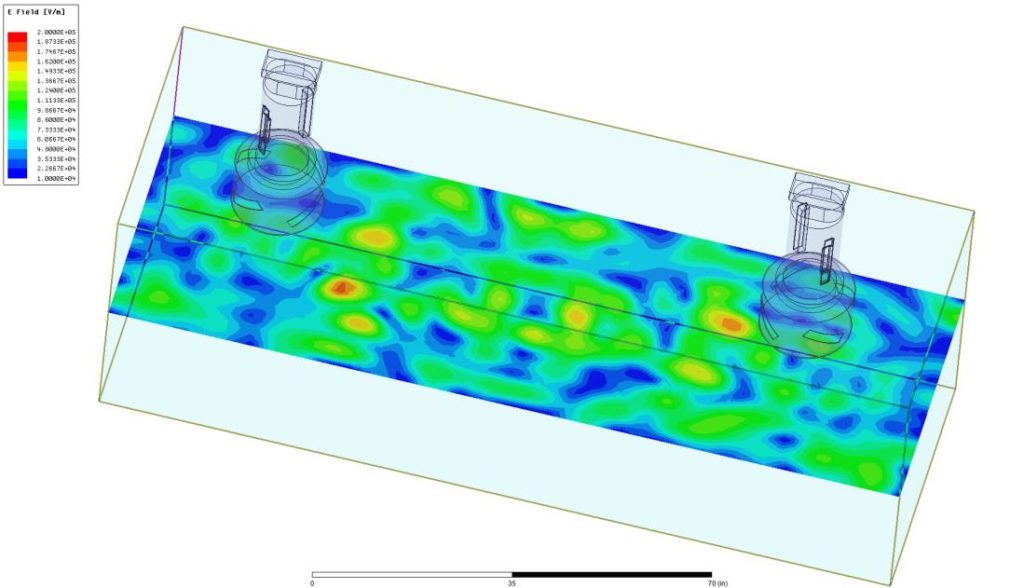
8 Foot Cavity, With Five Boxes of Beef
Figure 5: Rotary Antenna, 100 kW
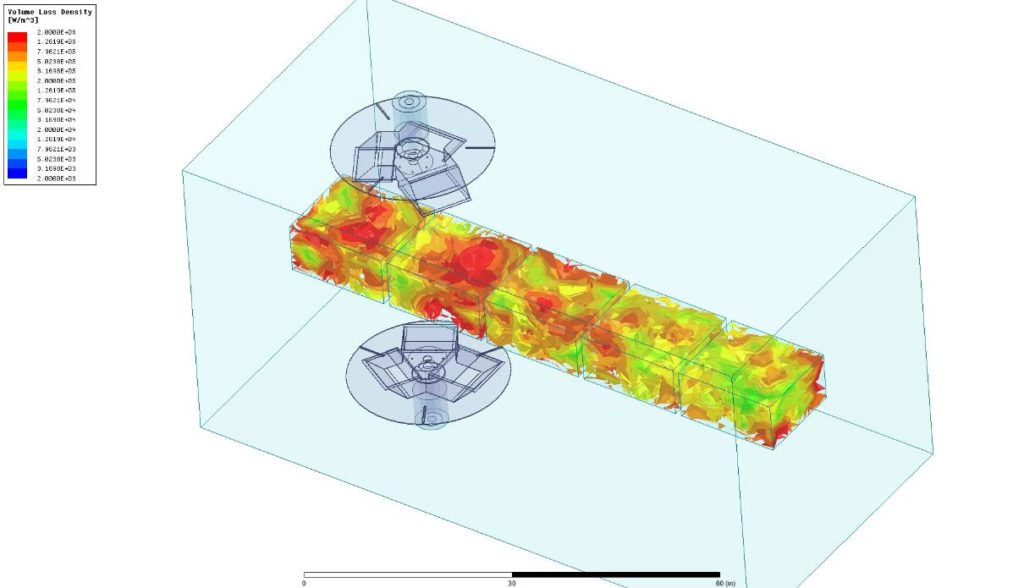
Figure 6: Slotted Polar caps, 100 kW (same scale and power)
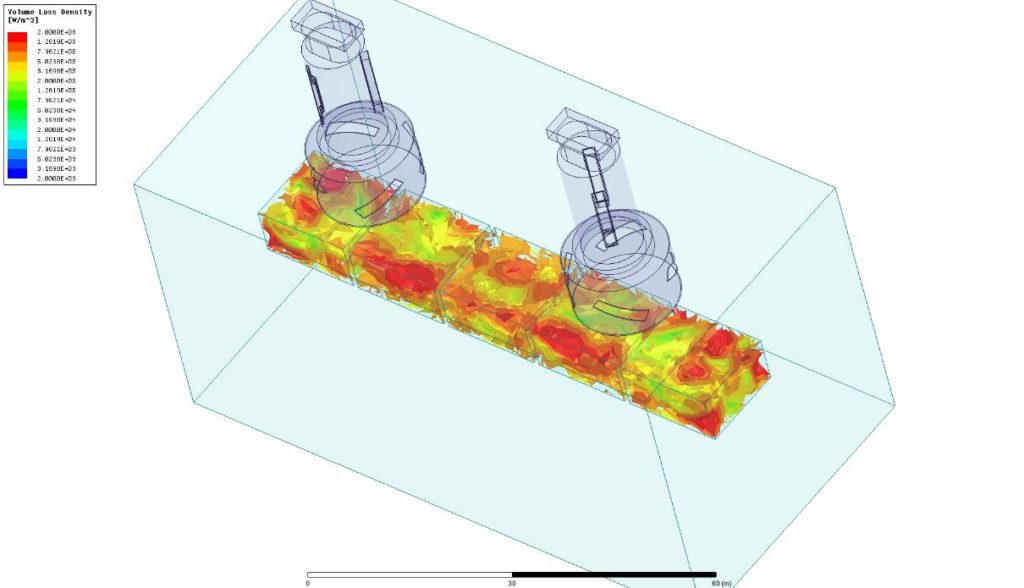
12 Foot Cavity, with Eight Boxes of Beef
Figure 7: Rotary Antenna, 100 kW
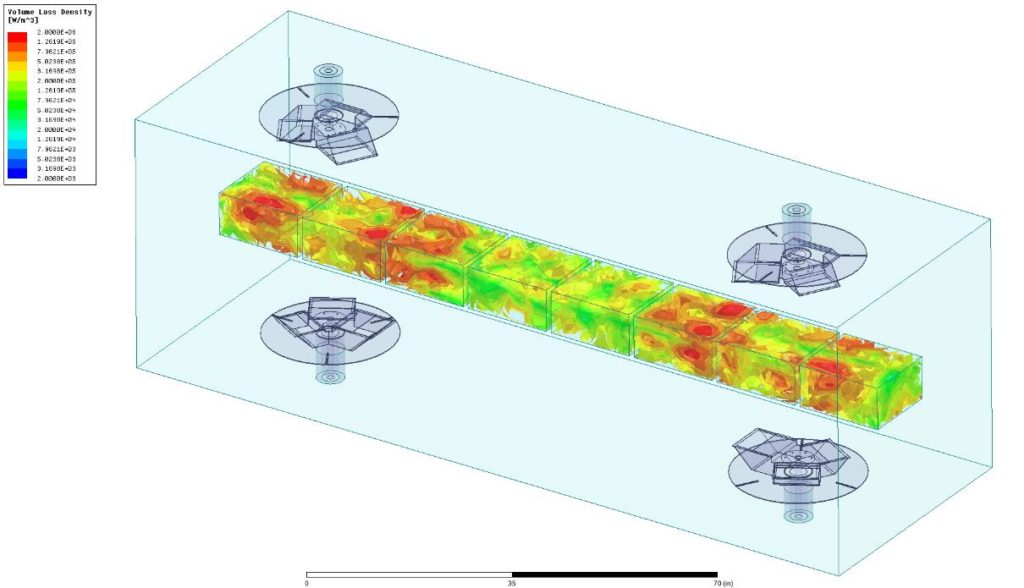
Figure 8: Slotted Polar Caps, 100 kW
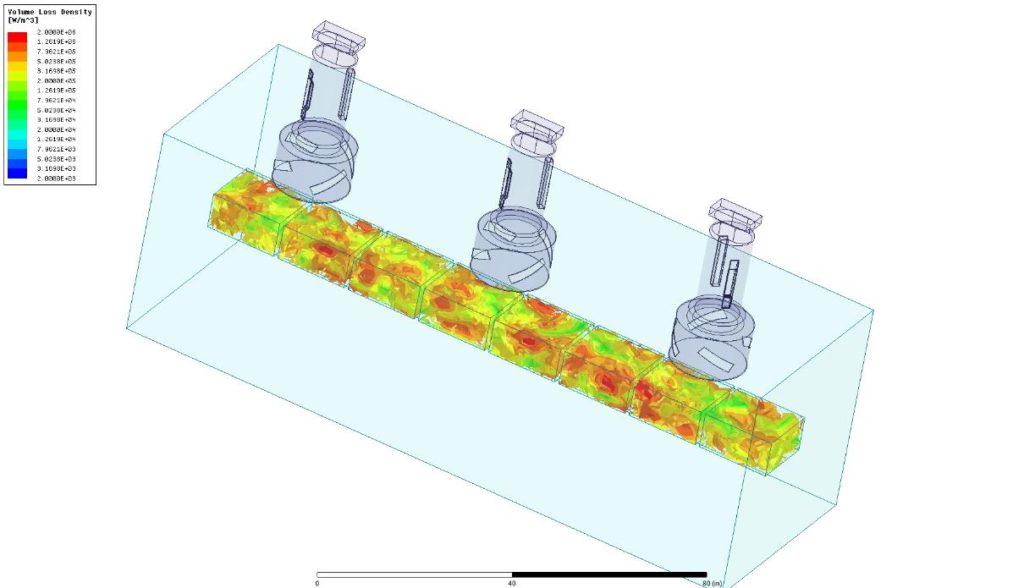
For more information about the New SPC Antenna, please contact our sales team for more information.

